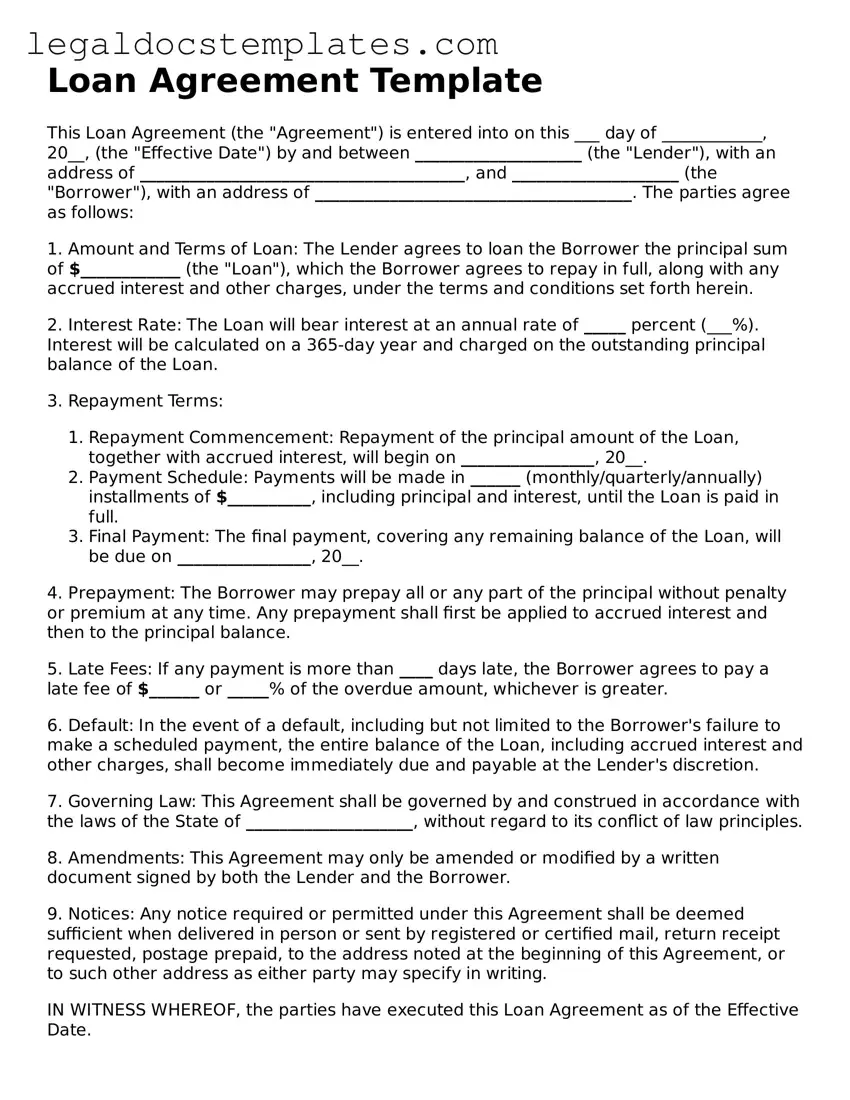Loan Agreement Template
This Loan Agreement (the "Agreement") is entered into on this ___ day of ____________, 20__, (the "Effective Date") by and between ____________________ (the "Lender"), with an address of _______________________________________, and ____________________ (the "Borrower"), with an address of ______________________________________. The parties agree as follows:
1. Amount and Terms of Loan: The Lender agrees to loan the Borrower the principal sum of $____________ (the "Loan"), which the Borrower agrees to repay in full, along with any accrued interest and other charges, under the terms and conditions set forth herein.
2. Interest Rate: The Loan will bear interest at an annual rate of _____ percent (___%). Interest will be calculated on a 365-day year and charged on the outstanding principal balance of the Loan.
3. Repayment Terms:
- Repayment Commencement: Repayment of the principal amount of the Loan, together with accrued interest, will begin on ________________, 20__.
- Payment Schedule: Payments will be made in ______ (monthly/quarterly/annually) installments of $__________, including principal and interest, until the Loan is paid in full.
- Final Payment: The final payment, covering any remaining balance of the Loan, will be due on ________________, 20__.
4. Prepayment: The Borrower may prepay all or any part of the principal without penalty or premium at any time. Any prepayment shall first be applied to accrued interest and then to the principal balance.
5. Late Fees: If any payment is more than ____ days late, the Borrower agrees to pay a late fee of $______ or _____% of the overdue amount, whichever is greater.
6. Default: In the event of a default, including but not limited to the Borrower's failure to make a scheduled payment, the entire balance of the Loan, including accrued interest and other charges, shall become immediately due and payable at the Lender's discretion.
7. Governing Law: This Agreement shall be governed by and construed in accordance with the laws of the State of ____________________, without regard to its conflict of law principles.
8. Amendments: This Agreement may only be amended or modified by a written document signed by both the Lender and the Borrower.
9. Notices: Any notice required or permitted under this Agreement shall be deemed sufficient when delivered in person or sent by registered or certified mail, return receipt requested, postage prepaid, to the address noted at the beginning of this Agreement, or to such other address as either party may specify in writing.
IN WITNESS WHEREOF, the parties have executed this Loan Agreement as of the Effective Date.
Lender's Signature: ___________________________________
Borrower's Signature: ___________________________________
